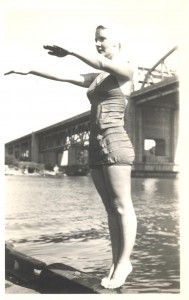
which one is “huge”?
I received my medical records from UBC and VGH recently. A lot of people don’t know that you can get copies of all of your medical records. It takes about 6-7 weeks to get them after you request them. I find it amazing to read what people think about you and what they say about you in the chart notes. In general, these records were a million times better than the last hospitalization where there were so many errors, oversights and judgements.
The most surprising note in all of these records was from the pharmacist who really went overboard with my possible suicide. She suggested that I only be given a one week prescription upon discharge for the drug I was taking, Dilantin or phenytoin. She had no idea the amount of pharmaceuticals I had at home and there are plenty of ways to try to kill yourself if you’re going to do it. I was very unhappy at VGH because I had gone over expecting to have surgery and it didn’t happen. After over a year of almost constant pain, social isolation, looking for answers, then finally given some hope that it could end, it was taken away. I was devastated.
The neurosurgeon wrote quite a good report. He had some of the details in the history wrong and there are times when he says things like “there is some confusion in the history at this point” when there was no confusion on my part at all. The confusion lay with the person who took the history, the neurosurgical fellow, who is not the same person dictating the report. The fellow had asked me for the full history, so I gave it to him. So, in this official report, there are errors in dates, lengths of time of symptoms, etc.
The neurosurgeon did say that I was ‘overwhelmed’ with the diagnosis of multiple sclerosis and trigeminal neuralgia. Well, not really. I knew I had trigeminal neuralgia since May of 2010. And I knew I had MS for sure after my second MRI in July 2012, but I didn’t have it confirmed by a qualified/competent neurologist. I’m not a neurologist so I can’t self-diagnose, even when I can see classic MS lesions in my copy of the MRI. (The neurologist I had been seeing told me on October 9, 2012, that I did not have MS.) I did not have the lesion in my pons identified until Neurologist #5 looked at the MRI on November 16, 2012. I was overwhelmed with the PAIN, the PAIN, the PAIN, the PAIN, the PAIN, the PAIN, the PAIN . . . still don’t know why that doesn’t get across. Apparently, in his words, “the forehead pain scared her and prompted the hospitalization.” Well, it didn’t just ‘scare’ me, I was in my GP’s office on my knees, screaming in pain. I guess you could say I was scared. You’d be ‘scared’ too if you were being electrocuted in your head.
One thing I liked about the neurosurgery report was his description of me as a ‘meticulous historian’. I agree with his comment that the amount of detail took away from the “greater picture.” But how was I to know which details are relevant or might provide clues to the doctor? His fellow, a doctor from Egypt, was fascinated with the book I had with me, “Striking Back”, the handbook on facial pain written for the layperson. He was surprised to see that it had a photo of the exact machine that they use for rhizotomies at VGH. This made it into the report: “She presented with a huge textbook on facial pain and was very knowledgeable about percutaneous rhizotomy and has already been on our website.”
So, I ask you, is the paperback book in the photo a ‘huge textbook’? Hardly. It’s comprehensive and full of really useful information for people suffering from facial pain. It’s not a
huge
textook like the one I have on neurology, “Principles of Neural Science”. It’s interesting to me to think about the visual image evoked with the language. If the paperback on top is huge, how do you describe the one on the bottom? Really huge? Huger? It made me chuckle.



















